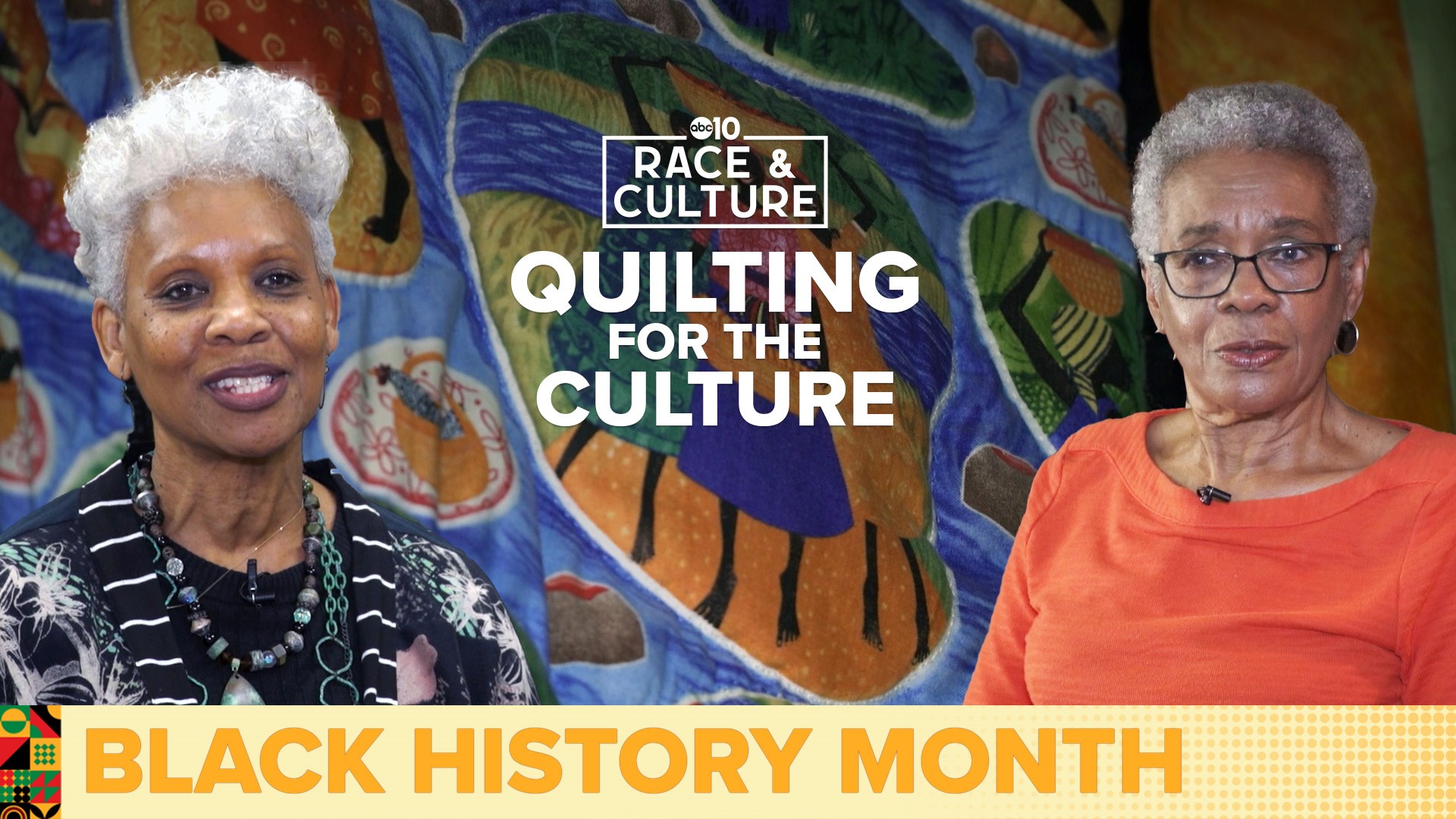SACRAMENTO, Calif. — Roxie Mason spends her retirement quilting at home in Sacramento. She's been quilting for 10 years and she makes quilts for her family stitched with love.
"It's like putting a puzzle together," Mason said. "I just find it challenging, but also relaxing. I make quilts for my grandchildren, brothers, sisters, great nieces and nephews. And, at least in my family, as far as quilting and the culture of growing up around quilts, it was more for comfort and warmth."
According to the National Museum of African American History and Culture, quilting is a symbol of the blending of different cultural traditions. Each tradition borrows from and contributes to the art form.
Quilting is the process of sewing two layers of fabric together, using multiple rows of stitches in decorative patterns, like straight lines with bigger stitches. It is generally done by hand or machine.
Quilting has long been used for clothing in China, the Middle East, North Africa and the colder areas of Europe, but is now primarily associated with bedcovers and wall hangings.
According to the International Quilt Museum, quilting has a rich and diverse history from the ancient to the modern world. Some quilters and scholars say enslaved African Americans may have used coded quilts to navigate the Underground Railroad but the International Quilt Museum says "there's no evidence" of that happening.
"The first evidence that we know of quilting is found in an Egyptian tomb," said Carolyn Ducey with the International Quilt Museum. "It was used to decorate a cat mummy in the tomb so the idea of quilting and its patterning is really ubiquitous throughout the world and throughout time. Within a family and culture, could they have created quilts and used them to portray a message? That is something that we've seen through quilting, always throughout quilting. Messages are often found in quilts, and what that message is is unique to the individual."
GET MORE RACE & CULTURE FROM ABC10:
►Explore the Race & Culture home page
►Watch Race & Culture videos on YouTube
►Subscribe to the Race and Culture newsletter
Yvonne Warren uses quilts to promote Black culture. She owns "Jewels and Fiber Art Studio" in Sacramento. She mostly makes art to wear. For Warren, quilting is an outlet for creative expression.
"Everybody should learn about everyone's culture," Warren said. "I make garments that have a lot of quilting techniques in them and some of my purses as well. I like crazy quilts and a lot of stitching that goes on the top to give it surface design and texture. I also use my own techniques when it comes to making a piece. I don't know if it may go on a bed, but it will be a piece of art somewhere."
Mason and Warren are both members of the Sisters Quilting Collective (SQC) in Sacramento. It's a quilt and fiber arts group. SCQ encourages African American artists and others to come together to share their love for quilting.
Sonja Lopes joined the group from the start in 2012. She currently serves as the SQC chairperson. She says the group is more than just creating art, it's also about building a strong sisterhood.
"I joined Sisters Quilting Collective because my family became biracial," Lopes said. "I wanted to learn more about African art and culture. And, if we learn, maybe we can learn to do better."
Lopes goes on to explain the group meets each month to talk about fiber arts and ways to give back to the community.
"We do a lot of quilts for underprivileged children," she said. "We make fleece hats and scarves. We give them away during the winter."
The theme this year for Black History Month is "African Americans and the Arts." It's an opportunity to highlight African American artists, past and present, and their significant contributions to society. With the use of fabric, thread and needles, quilters around the world continue to tell stories that represent Black people, history and culture for all to celebrate.
"We have some famous quilters, like Faith Ringgold, and there's a tremendous list of women and men who create, and tell stories," Mason said. "I think it's a beautiful method of expression. People who would not ordinarily find the information in a book may find it expressed in a quilt."
We want to hear from you!
The Race and Culture team's mission is to serve our diverse communities through authentic representation, community engagement and equitable reporting. Accomplishing our goals of inclusive reporting requires hearing from you. Is there a person or place that you want us to highlight? Email us at raceandculture@abc10.com or fill out the form below.

